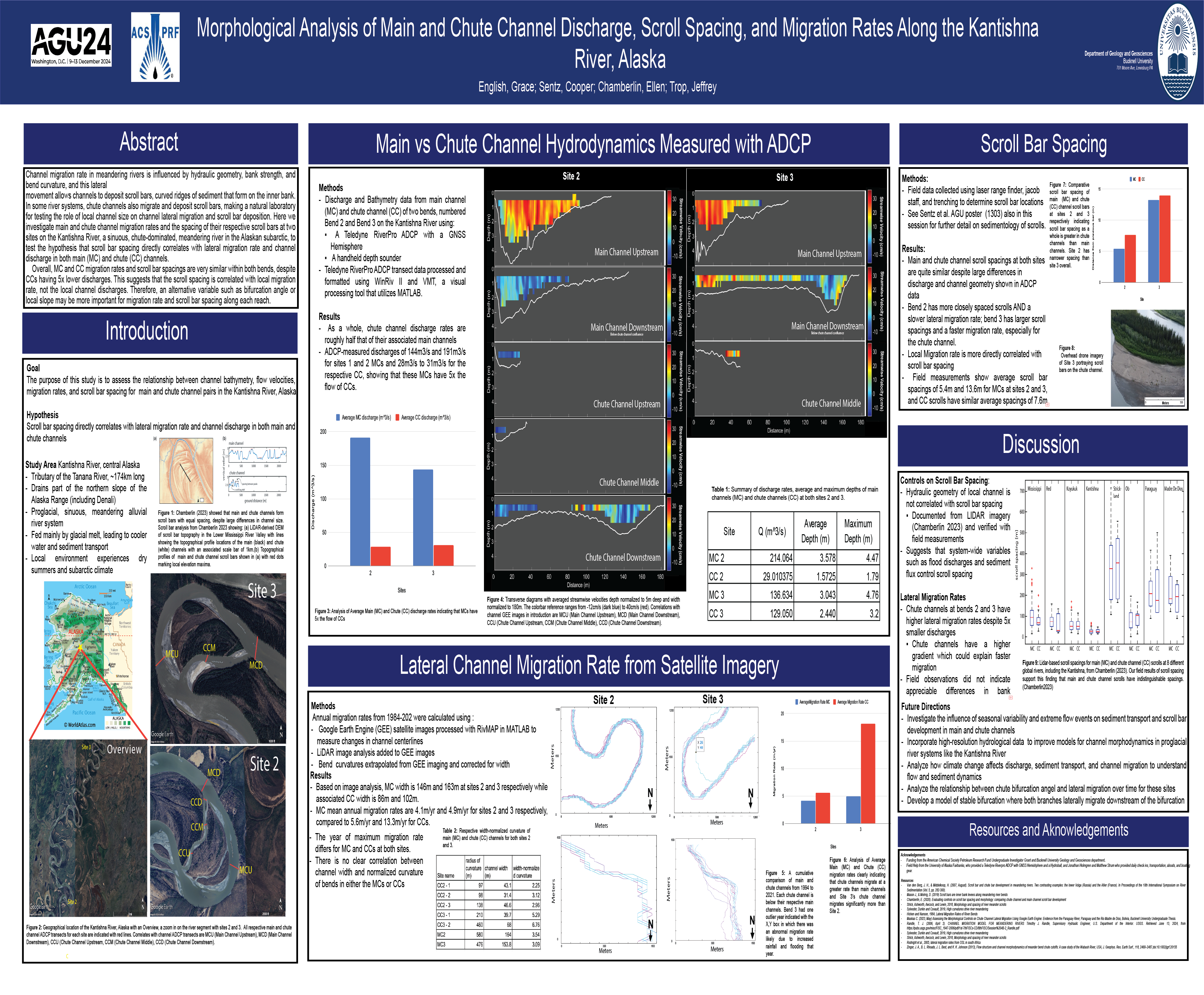
Morphological Analysis of Main and Chute Channel Discharge, Scroll Spacing, and Migration Rates Along the Kantishna River, Alaska
Author:
Grace English ’25Co-Authors:
Cooper SentzFaculty Mentor(s):
Ellen Chamberlin, Geology and Environmental GeosciencesFunding Source:
American Chemical Society Petroleum Research Fund Undergraduate Investigator GrantAbstract
Channel migration rate in meandering rivers is influenced by hydraulic geometry, bank strength, and bend curvature, and this lateral movement allows channels to deposit scroll bars, curved ridges of sediment that form on the inner bank. In some river systems, chute channels also migrate and deposit scroll bars, making a natural laboratory for testing the role of local channel size on channel lateral migration and scroll bar deposition. Here we investigate main and chute channel migration rates and the spacing of their respective scroll bars at two sites on the Kantishna River, a sinuous, chute-dominated, meandering river in the Alaskan subarctic, to test the hypothesis that scroll bar spacing directly correlates with lateral migration rate and channel discharge in both main and chute channels.
We collected discharge and bathymetry data from the main channel (MC) and chute channel (CC) of two bends on the Kantishna using a Teledyne RiverPro ADCP with a GNSS Hemisphere, and completed field mapping of scroll bar spacing using a laser rangefinder. For the same two bends, we calculated annual channel migration rates from 1984-2020 using satellite images from Google Earth Engine processed with RivMap, a MATLAB package that measures changes in channel centerlines.
Preliminary results show ADCP-measured discharges of 144m3/s and 191m3/s for sites 1 and 2 MCs and 28m3/s to 31m3/s for the respective CC, showing that these MCs have 5x the flow of CCs. Based on image analysis, MC width is 146m and 163m at sites 1 and 2 respectively while associated CC width is 86m and 102m. MC mean annual migration rates are 4.1m/yr and 4.9m/yr for sites 1 and 2 respectively, compared to 5.6m/yr and 13.3m/yr for CCs. Field measurements show average scroll bar spacings of 5.4m and 13.6m for MCs at sites 1 and 2, and CC scrolls have similar average spacings of 7.6m and 14m at the same sites. Additionally, the year of maximum migration rate differs for MC and CCs at both sites.
Overall, MC and CC migration rates and scroll bar spacings are very similar within both bends, despite CCs having 5x lower discharges. This suggests that the scroll spacing is correlated with local migration rate, not the local channel discharges. Therefore, an alternative variable such as bifurcation angle or local slope may be more important for migration rate and scroll bar spacing along each reach.